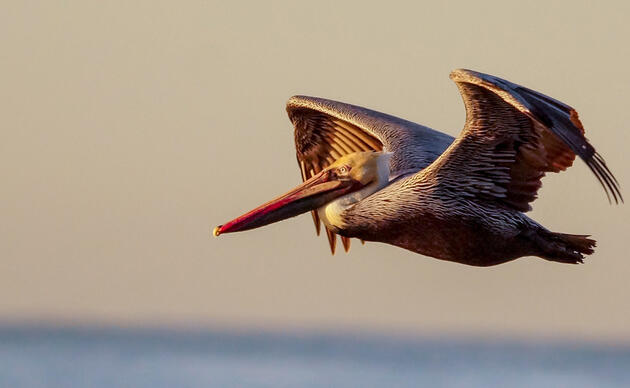This article first appeared in the Post and Courier.
SUMMERVILLE — Wings drum past your ear, tiny bead-black eyes hover in front of yours as hummingbirds swarm the backyard of Colleen and Al Foster.
“Yesterday, I must have seen 100 here,” Al Foster said on a recent afternoon. “The air was just full of them. You were about scared to walk through them.”
The hummingbirds are more than the Fosters have seen in a long time.
Not that the couple discourages the darting wonders. They have some 70 feeders hung from the trees and in the eaves of the pump house, as well as the jack-in-the-beanstalk runner bean trellises. They refill the feeders with sugar water four times a day, going through two gallons as they do.
Al Foster of Summerville takes care of nearly 70 humming bird feeders at his home
Seventy feeders?
“It would look like there’s not enough and I’d just put some more out,” Colleen Foster said.
Hummingbirds are those colorful tiny birds that pull nectar from flowers like bees, flitting back and forth or hovering with their wings seemingly nonstop. The birds themselves are a bonanza — more than 300 species. Their bellies, necks and heads are often bright green, red or purple.
Like many other bird species, some types of hummingbirds are thought to be declining due to habitat loss and other factors. But the quick little birds are not easy to document and research continues.
It’s too soon to say if it’s been one of those particularly good years for hummingbirds, according to Audubon South Carolina birders who try to track the population. But they and their nestlings are appearing more around backyard feeders right now, sugaring up for the fall migration to Mexico, Central America, and the Caribbean islands.
Colleen Foster and her husband, Al Foster, fill hummingbird feeders at their home on Monday, Aug. 19, 2019, in Summerville. They have to fill them about four times a day because so many birds stop by to feed.

Reports to Audubon and the online eBird sighting registry have run the gamut from plentiful to few, depending on location, said Jennifer Tyrrell, the Audubon chapter’s bird-friendly communities coordinator. But, as citizen scientist sightings are reported, Audubon and other interested bird advocates will get a better handle on it.
“There are definite fluctuations year to year,” she said.
And if it’s an unusually strong or weak year, that data becomes very important to population tracking, said Matt Johnson, the chapter’s director of bird conservation and engagement.
The Lowcountry is along the Eastern flyway for hummingbirds and any number of other species from songbirds to shorebirds. And the edges of swamps are particularly attractive for them, because of the profusion of flowers and insects.
The Fosters’ farm along Cypress Swamp would be a preferred spot for the birds, Tyrrell said.
The couple also has planted a variety of flowering plants the tiny birds love, such as abelia and mandevilla. And the horde of maybe 100 hummingbirds that turned up recently might be the gathering of fledged young with adults, as well as the first wave of migrating birds.




